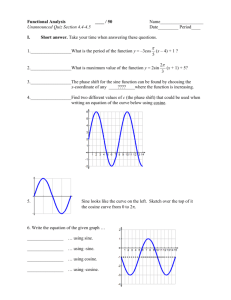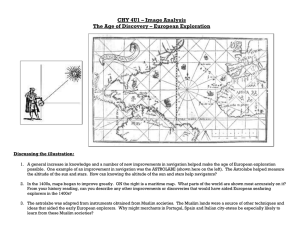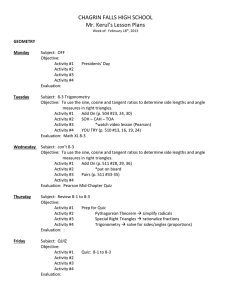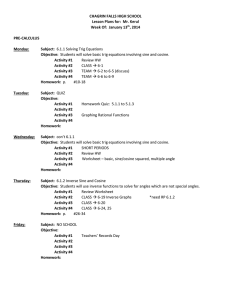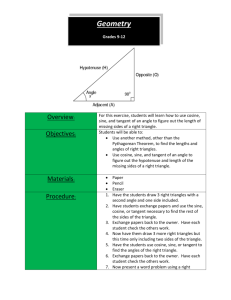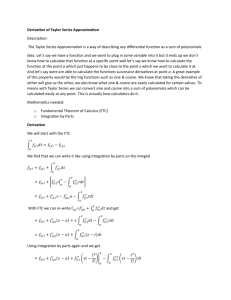• Lesson Title and Identifier: Identifier: 2.5
advertisement
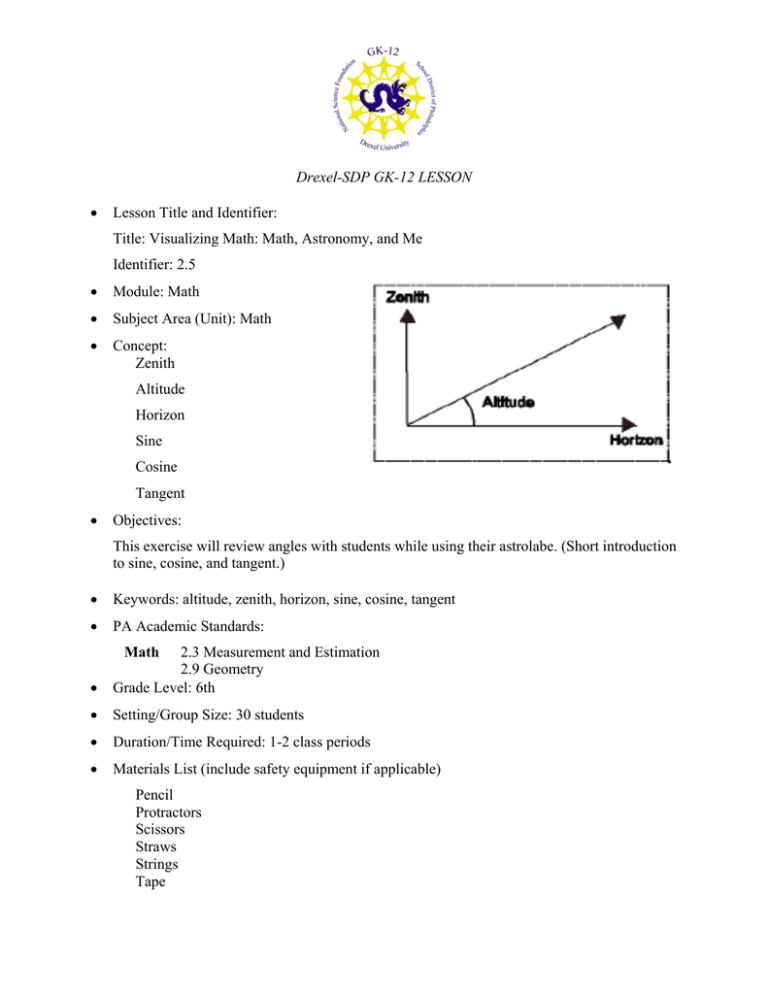
Drexel-SDP GK-12 LESSON • Lesson Title and Identifier: Title: Visualizing Math: Math, Astronomy, and Me Identifier: 2.5 • Module: Math • Subject Area (Unit): Math • Concept: Zenith Altitude Horizon Sine Cosine Tangent • Objectives: This exercise will review angles with students while using their astrolabe. (Short introduction to sine, cosine, and tangent.) • Keywords: altitude, zenith, horizon, sine, cosine, tangent • PA Academic Standards: Math • 2.3 Measurement and Estimation 2.9 Geometry Grade Level: 6th • Setting/Group Size: 30 students • Duration/Time Required: 1-2 class periods • Materials List (include safety equipment if applicable) Pencil Protractors Scissors Straws Strings Tape Rulers Weight (paper clips) Map of School yard (Constructed during the Landforms Module.) • Methods and Procedure: Step 1: Select on object that is relatively far away. This could be the top of a building or other structure on the school grounds. Then select 3-4 positions. The positions should be different distances from the object. Mark the positions with tape. Measure the distance from the positions to the object. (You may want the students to do the measuring themselves.) These will be used during the hands-on activity. Step 2: Discuss Zenith, Horizon, and Altitude. You may want to correlate it to sea travel. Step 3: Construct astrolabes using the protractors, string, straws, tape, and weight. Step 4: Review why the astrolabe works. Here are a few helpful illustrations that might help. This is how the students will use the astrolabe. Now we need to discuss the reason this angle is equivalent to the altitude per the definition given in the text. (This is a great place to work on the Additive Property) Step 5: Next the students will be using their astrolabe to gather data. Have the students break up into groups of 3-4 students. Step 6: Have the students stand on 3-4 positions you previously marked. Each student will record their own findings in the field. Here is a sample table for data collection: Data Collection: Recording the Altitude (in Degrees) from Different Positions Student 1 Student 2 Student 3 Student 4 Position 1 Position 2 Position 3 Position 4 Step 7: Once the students have returned to the class room, have them share their recordings with their team members. Do the students notice any discrepancies in their data and their team members’ data? Step 8: Introduce the basic concept of sine, cosine, and tangent. Why is this important? Since we know the distance to the object can we find its height? • Assessment You will be evaluated on a scale from 0 to 4 on: ______________ ______________ ______________ Participation Task Completion Correctness • Authors Connie Gomez and Pat Wilkes

